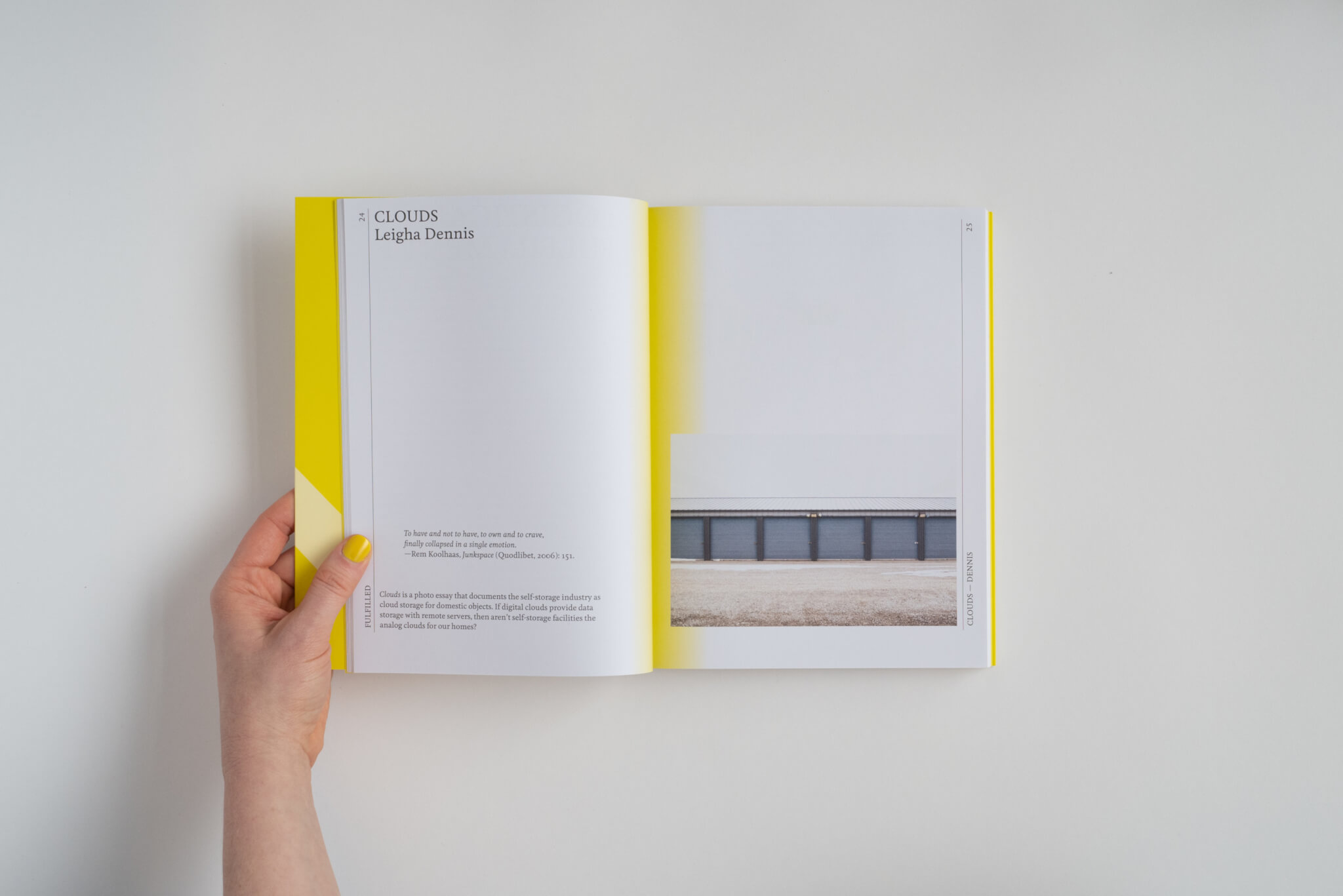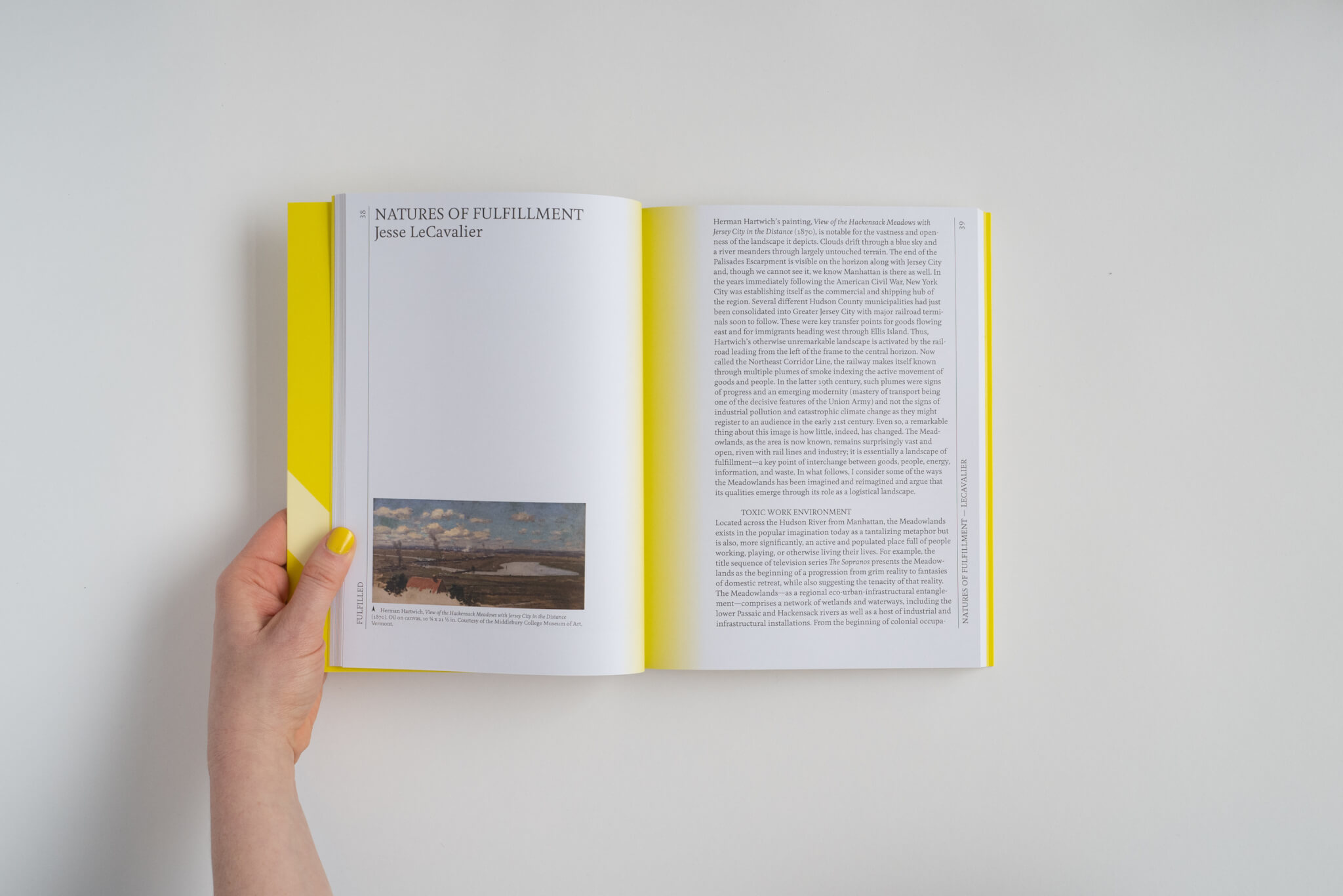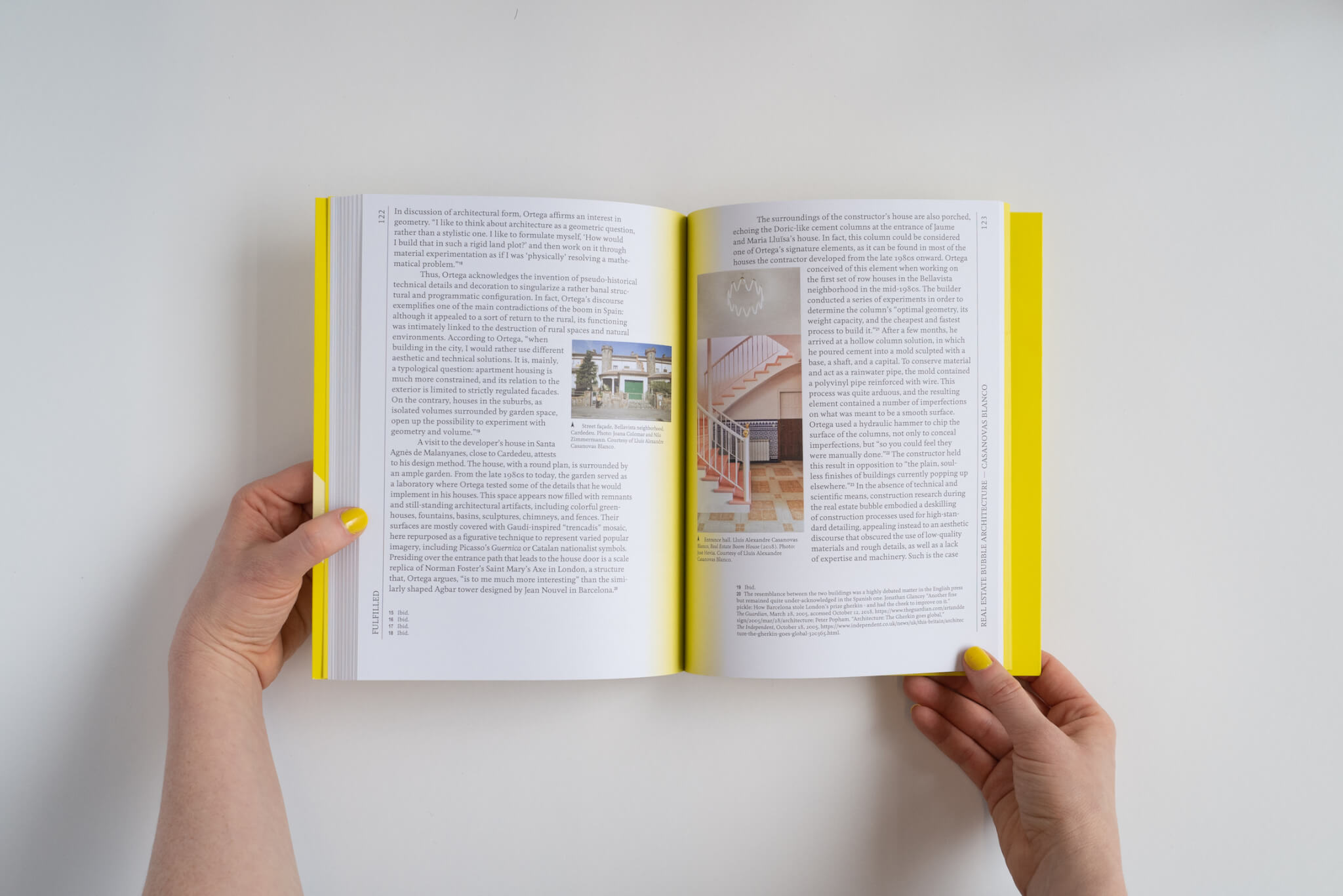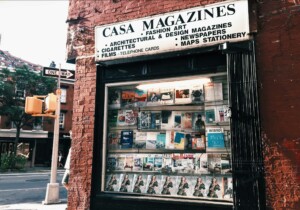Fulfilled: Architecture, Excess, and Desire
Edited by Ashley Bigham | Applied Research + Design Publishing | $29.95
Driving through rural and suburban landscapes seemingly offers only the repeating vistas of farmland, housing developments, small towns, and the occasional roadside attraction. However, hidden in among—and, of course, in part responsible for—these patterns of settlement are the complicated networks of logistical systems that support modern life: Server farms, storage facilities, fiber optic networks, warehouses, and other typologies inconspicuously connect disparate individuals nearby and across the globe. These networks enable our economic relationships with incredible specificity over planetary distances. A few clicks of the mouse (or swipes of the screen) enable our desires to be sated more easily than ever, and yet the infrastructures of these systems remain elusive. It’s a telling thing that fulfillment means happiness and, thanks to Amazon, also connotes an intense regime of capitalist achievement.
This condition lies at the heart of Fulfilled: Architecture, Excess, and Desire, a book edited by Ashley Bigham that documents a symposium and an exhibition of the same name at Ohio State University that took place in February 2020, just before Americans’ reliance on postal products skyrocketed during the pandemic. (Bigham, an assistant professor at Ohio State University and, with Erik Herrmann, a founder and coprincipal of Outpost Office, curated both events, while the exhibition was designed by Outpost Office.) A series of guests (whose contributions now appear in this book) participated in the former, while 40 designers sent work to be shown as part of the latter effort. The only requirement for the work was that it fit inside a USPS Priority Mail Large Flat Rate box. The contents of the boxes used in the exhibition appear at the end of the book, photographed while being unboxed from said USPS packaging.
In the book, written and visual contributions (developed from the symposium’s presentations) are organized using three lenses for examining fulfillment: logistical, which examines the physical and digital networks that allow for the purchase and procurement of objects at a global scale; material, which delves into the physical characteristics of the objects that we keep; and cultural, which conflates austere logistical systems with the desirous qualities of materials to bring about some productive friction.

Leigh Dennis’s photo essay Clouds, which documents personal storage facilities, opens the section on Logistical Fulfillment section. Dennis’s photographs conjure the spirit of Bernd and Hilla Becher’s photography of rural typologies, as the storage facilities are portrayed as nearly identical characters with similar material arrangements: corrugated metal, overhead door, single accent color, pitched roof. Dennis’s images heighten the small idiosyncrasies between storage buildings; viewers subsequently inspect and notice these buildings that would otherwise fall to the background, remaining unconsidered and invisible. The idiosyncrasies of Dennis’s storage facilities feel like moments of authorial involvement with a utilitarian typology: Why are some of the sheds painted while others are not? Why do some have pitched roofs while others are flat? The differences point to small moments of agency in an otherwise austere typology, as storage facilities are part of complex, esoteric systems that govern the transportation and storage of goods. Later, Bigham references Timothy Morton’s “hyperobjects” to describe the USPS, a system that, borrowing Morton’s description of the phenomenon, is “uncanny and intimate at the same time.” In Fulfilled, Bigham takes on the logistical network that makes buying, shipping, and receiving goods possible as a hyperobject itself.
The following essay, “Natures of Fulfillment” by Jesse LeCavalier, studies the Meadowlands in New Jersey to examine its torrid history of industrial negligence, infrastructural development, resilient ecosystems, and (eventual) remediation. The resulting landscape is, according to the author, unnatural, untamed, and sublime. LeCavalier posits that the Meadowlands provides a tangible metaphor for both the melding of ecological consequences of logistical systems and a case study for our desire to make these landscapes economically productive again, no matter the cost. Still, the terrain hasn’t yet been repurposed, defying those who have tried to take agency over its toxic landscape.

Desire manifests in the fulfilling of needs and the realization of hopeful trajectories, but it also manifests in the negation of expectation or longing. In a four-part play, Michelle Chang meditates on acts of negation through an account of the Fulfilled symposium, which she did not attend. Instead, Chang paid a young actor to travel to Columbus and play her during the event. Fulfilled, the resulting dramatic script, explores the ways in which desire bubbles up in the presence of unresolved spaces and challenged expectations. We do not read Chang’s fully transcribed lecture, nor were those in the attendance at the symposium granted the real Michelle Chang. The distance between the thing we expect and what we receive creates friction, which in turn evidences the fragility of our ideas about how reality unfolds. Were people upset when their expectation for Chang to show up was not met? Or was the actor who went in her place able to play the part of an architect successfully enough that it did not matter?
What began as show that could’ve been cosponsored by the USPS has, with this publication, been expanded into a rumination on finding agency within complex systems. In Chang’s case, the role of the knockoff and social norms surrounding academic institutions are manipulated towards satisfaction—both, presumably, that of Chang (years ago) and the reader today.

Filed at the front and back, Fulfilled offers two essays not categorized under the three stated categories of fulfillment. To begin, Ana Miljački’s introductory essay expounds on the irony of living in a “hyperobjective” age in which we are constantly aware of our complicity in global networks that at once alienate us and facilitate instant connection. In lieu of a solution, Miljački provides a provocation: What if we, as architects, articulated political goals outside of our individual capital-p Projects and focused on collective organization? To conclude, John McMorrough’s essay examines the latent power of “the return.” In one sense, to return is to refuse an unsatisfactory object, but it also possesses the hopeful act of trying again.
These two bookending essays shape a prospective fourth lens for examining fulfillment that latently exists in the previous three but goes unnamed: political fulfillment. This ambition posits that we, as designers and citizens, can collectively find fulfillment in joining together to challenge existing social, cultural, and logistical systems and form our own networks through which we share, return, and exchange things in search of satisfaction.
Collectively, Fulfilled offers an examination of the interpersonal and inter-object relationships that constitute the invisible-but-organizing macro-systems we are enmeshed in—as people and as architects. But it also furnishes examples of how to find agency within these structures and, in turn, create space, desire, or friction. Amid so many packages sent, tracked, and received, the effort finds a set of architects exploring the conditions of our messy, isolating global entanglements. They emerge to recommend the moments where we can make our mark, shaping pieces of the systems that govern our lives.
Charles Weak is an architect and writer practicing in New York.











